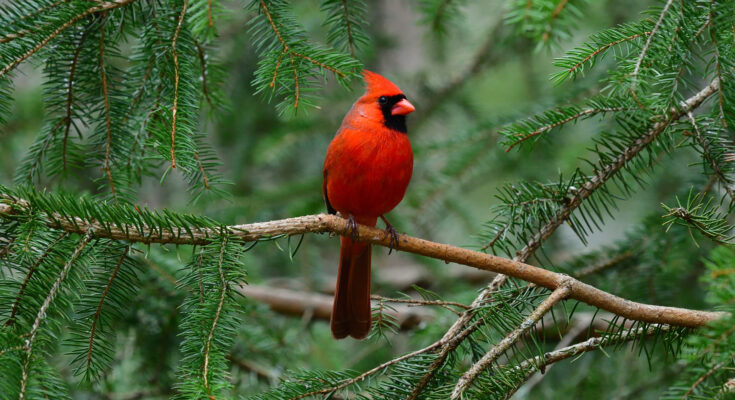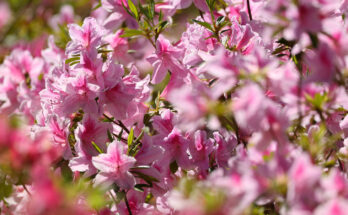The Herbs You’ll Want To Add To Your Garden To Attract More Beautiful Cardinals
Your outdoor space will be festive all year round if it’s attractive to cardinals. The northern cardinal is an iconic species of songbird that does not migrate, so you can see the bright-red-feathered males whether they are trying to attract a mate or hopping around looking for food. Having them around is a surefire way to add color to your garden. These charming birds are on the lookout for insects when they are feeding their young in the warmer months, so if you want to attract them in the spring and summer, the trick is to make sure caterpillars are plentiful.
Cardinals search for nutritious caterpillars after they build their nests in late winter. They feed caterpillars and other insects to their young for as long as two months after they hatch. Planting herbs that caterpillars feed on will help you ensure the baby cardinals have nourishment and their parents have something to forage. Herbs including dill (Anethum graveolens), milkweed (Asclepias syriaca), and more are host plants, meaning adult butterflies lay eggs on their leaves and the caterpillars are nourished by them.
Herbs and flowers bring caterpillars to your yard
Some caterpillars eat the leaves of only one or a few particular plants, but luckily, cardinals are less picky about the types of caterpillars in their diet. While growing up in their nests, they eat the larvae and caterpillars of various butterfly species, including Eastern black swallowtails, monarchs, and silvery checkerspots.
Several herbs nurture the caterpillars of Eastern black swallowtail butterflies. Dill, an edible herb that favors full sun and slightly acidic soil, is a particularly popular herb to fill your garden with butterflies. Its best habitat is in USDA hardiness zones 2 through 11. These caterpillars also eat both the curly and flat-leaved varieties of parsley (Petroselinum crispum), which grows in moist soil and light shade, and fennel (Foeniculum vulgare), a licorice-flavored perennial that thrives in USDA hardiness zones 4 through 9. They will feed on the plant — and can be food for cardinals — for about a month.
Monarch caterpillars feed exclusively on common milkweed, a perennial that flowers in the summer. This plant prefers full sun and well-draining soil but can grow in poor or dry soil, and it flourishes in USDA hardiness zones 3 through 9.
Another option is to grow coneflower (Echinacea angustifolia), a perennial that can grow in rocky or poor soil and attracts silvery checkerspot caterpillars. It’s often started from seed indoors or sown in outdoor seed beds in spring or summer.
Spotting caterpillars and cardinals
Once your plants are established, look for signs that the caterpillars are developing nearby. On dill, parsley, and fennel, seeing yellow eggs on the plant leaves will mean you’re on the right track, and about a week later, the young black caterpillars should emerge. Older Eastern black swallowtail caterpillars are bright green with black and yellow spots. If you’ve planted milkweed, pay attention in February and March, when monarch butterflies lay tiny cream-colored eggs. Their larvae are pale gray or light green and sport a pattern of yellow, black, and white stripes as they grow. If you’re growing coneflowers, look for the dark, bristled larvae of the silvery checkerspot, which tend to congregate on leaves after their clustered eggs hatch.
In addition to planting the flowers and herbs these caterpillars feed on, consider whether you have foliage conducive to cardinals’ nesting habits. Do you have bushes, trees, or dense shrubs around? If you do, these provide great nesting options that can attract cardinals to your garden. There will be some indicators that your planting efforts are attracting cardinals. The birds build cup-shaped nests out of roots, grass, and other natural materials. The nests may be as low as 3 feet above ground but will usually take a keen eye to spot. A female cardinal, with red accents on olive-gray feathers, or an immature brown cardinal is not as flashy a sight as a red male, but it can mean a nest is within fluttering distance.



